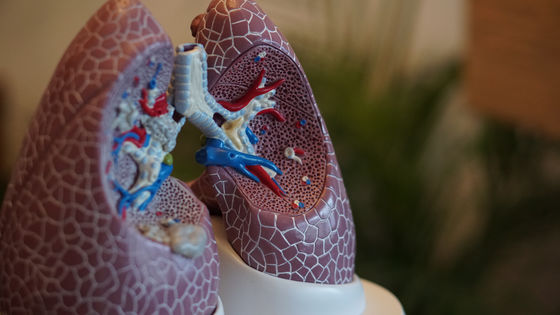An autonomous magnetic tentacle robot that can inspect and treat cancer without damaging the body is born

A British research team has developed an autonomous snake-like robot that can reach the 'human lung', which is difficult even for doctors, announced in
Patient-Specific Magnetic Catheters for Atraumatic Autonomous Endoscopy | Soft Robotics
https://www.liebertpub.com/doi/10.1089/soro.2021.0090
This snakelike robot slithers down your lungs and could spot --The Washington Post
https://www.washingtonpost.com/technology/2022/04/01/autonomous-snake-robot-lung-cancer/
A research team at the University of Leeds has published a research paper on a 'magnetic tentacle robot' with a thickness of about 2 mm made of magnetic disks on Soft Robotics. The research team says that a magnetic tentacle robot can be used to inspect and treat human lungs, but if the use cases expand, it will be possible to use it to inspect other organs such as the heart, kidneys, and pancreas. Sex is suggested.

Pietro Baldustri, principal investigator of the project and researcher on autonomous systems at the Robotics Division of the University of Leeds, said of magnetic tentacle robots: 'You may find it creepy, but our goal is possible. Finding a way to reach the depths of the human body in the least
According to the research team, it will take another 5 to 10 years for the magnetic tentacle robot to appear in clinical practice, but it will allow doctors to inspect the patient's lungs with higher accuracy and cancer. It is useful for finding sex organizations.

In the first place, when a doctor examines a lung cancer patient, it is necessary to examine the lungs and airways using a medical device called a bronchoscope. This bronchoscope is about 3.5-4 mm in diameter and penetrates through the patient's nose or mouth into the airways of the lungs called the bronchioles. However, the width and stiffness of the bronchoscope hinders the search for cancerous or other problematic tissue, so Bardustri says, 'part of the lung cannot be examined.' 'There are areas where existing bronchoscopes cannot sample body tissue, which is why cancer is detected very late,' said Bardustri.
The research team, including Baldustri, is continuing to develop a robot that can eliminate the shortcomings of such a bronchoscope, and it is a magnetic tentacle robot that can move around the body like a snake and discover cancerous tissue. am.
Developed by a research team at the University of Leeds, the magnetic tentacle robot is much smaller in size than a bronchoscope and can be easily changed in shape, allowing it to freely move through the airway network of the lungs, which stretches intricately like a tree branch. It is possible to move to. In addition, because it is an autonomous robot that can move around the body without maneuvering by a doctor, it is possible to carry out lung disease examinations more accurately and with less damage to the body than humans.
The magnetic tentacle robot will be operated using a robot arm with a magnet attached to the outside of the patient's body. Since the magnetic tentacle robot performs mapping while moving through the airway network inside the body, it will gradually become able to move inside the body automatically. After reaching the destination in the body, the magnetic tentacle robot can take a sample of body tissue and perform clinical treatment.

Nitish V. Thakor, a professor of biomedical engineering at Johns Hopkins University, points out that autonomous robots are 'a very novel and interesting technology' and can be useful, especially in the heart. In addition, Thakor said, 'I can imagine the future. A full CAT scan of the lungs will be done, the surgeon will sit in front of the computer and navigate the path of a snake-like robot like a magnetic tentacle robot. That's it. '
However, it is another matter whether autonomous robots such as magnetic tentacle robots will be accepted by clinicians, he said, 'Which surgeon would want to lose his job?' ..
According to a research team at the University of Leeds, the magnetic tentacle robot has been successfully tested on a corpse, and the next test is planned on a small animal. Mr. Baldustri points out that 'the robot needs to adjust to the human breathing rhythm' as an issue, and to other cases where magnetic products such as those wearing pacemakers can not be used. It seems that there are still issues regarding the response to.
Janani Lysenauer, a surgeon at the Mayo Clinic, said recent bronchoscopy robots are now able to collect tissue samples from all areas of the lung more than ever before. However, no one can deliver medicine deep into the lungs like the University of Leeds' magnetic tentacle robot, so 'if there is a small, maneuverable autonomous system that makes this possible, it's revolutionary.' Said.
Related Posts:
in Science, Posted by logu_ii







